AWS RDS
This document will help you integrate Amazon RDS with Squadcast.
Amazon RDS makes it easy to set up, operate, and scale a relational database in the cloud. It provides cost-efficient and resizable capacity while automating time-consuming administration tasks, such as hardware provisioning, database setup, patching, and backups.
Route detailed alerts from Amazon RDS to the right users in Squadcast.
How to integrate Amazon RDS with Squadcast
In Squadcast: Using AWS CloudWatch Event Rules as an Alert Source
(1) From the navigation bar on the left, select Services. Pick the applicable Team from the Team-picker on the top. Next, click on Alert Sources for the applicable Service
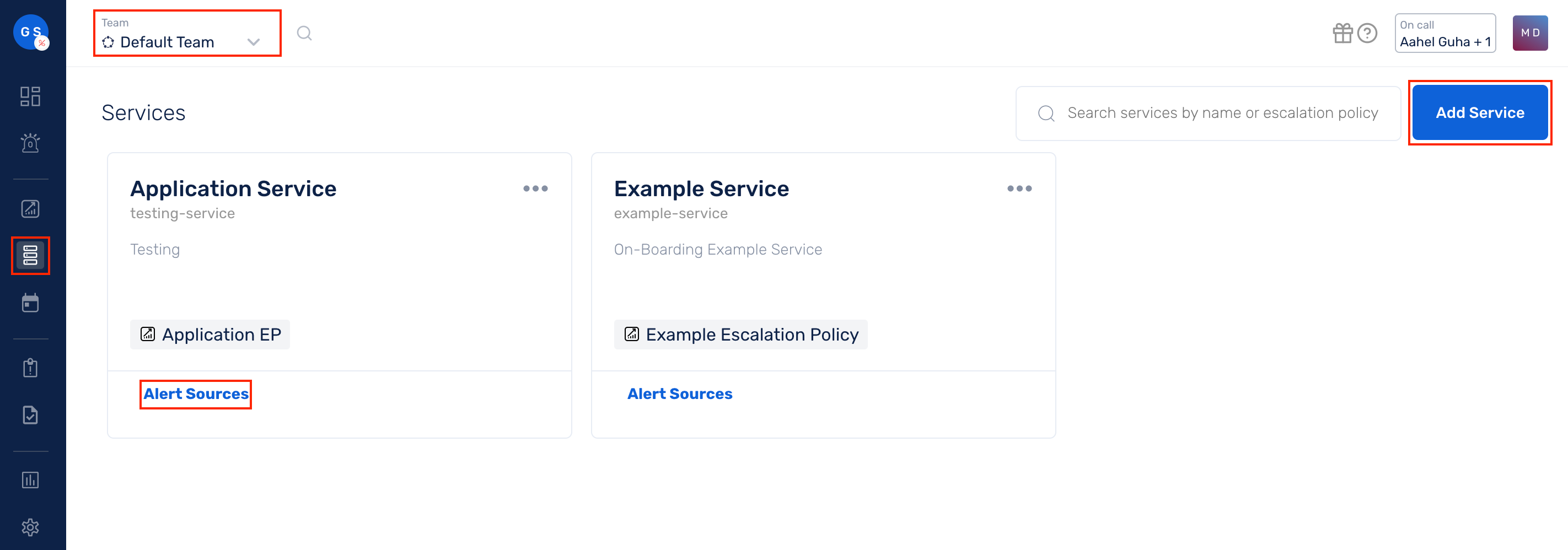
(2) Search for AWS Cloudwatch Event Rules from the Alert Source drop-down and copy the Webhook URL

For an Alert Source to turn active (indicated by a green dot - Receiving alerts against the name of the Alert Source in the drop-down), you can either generate a test alert or wait for a real-time alert to be generated by the Alert Source.
An Alert Source is active if there is a recorded incident via that Alert Source for the Service in the last 30 days.
In AWS: Configure SNS Endpoint
(1) Log in to your AWS account and proceed to SNS
(2) Click on Create topic
(3) Within the dialog box, fill in the details as per your requirements and then click on Create topic
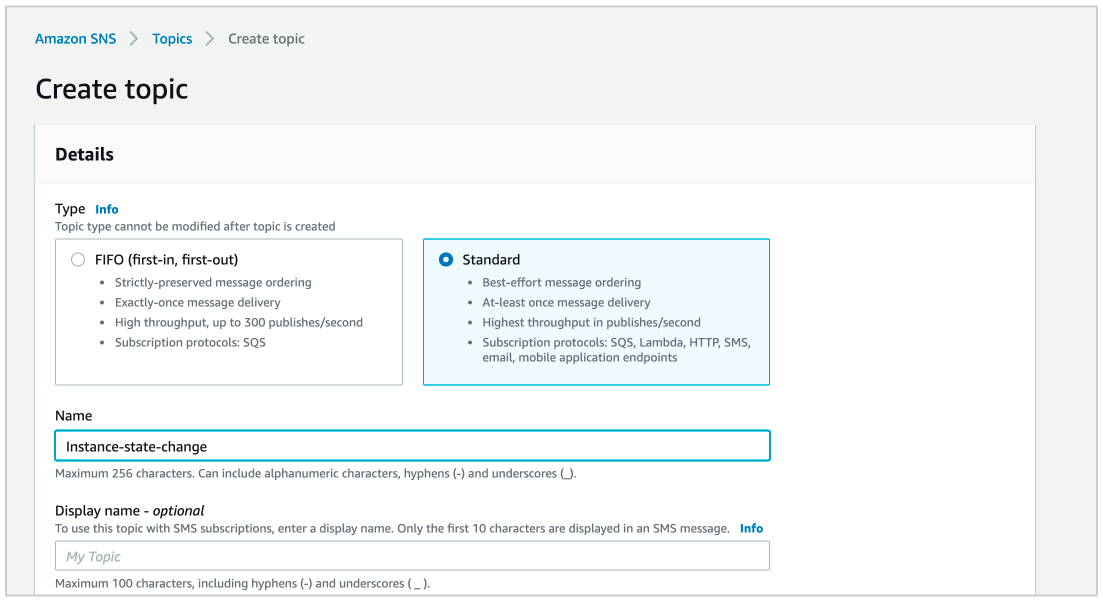
(4) Inside the topic, click on Create subscription
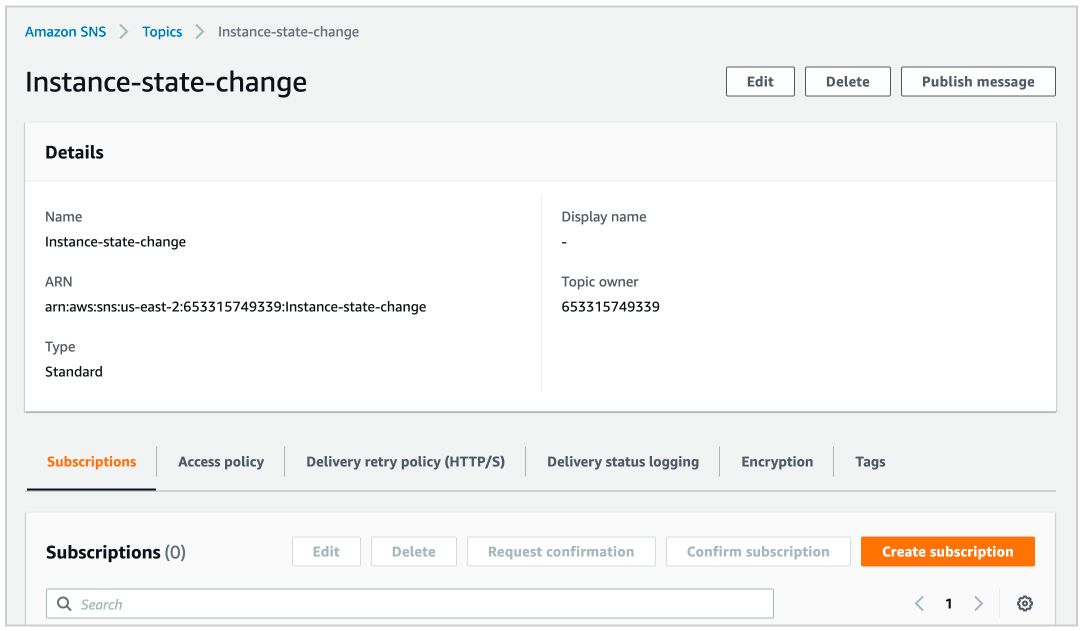
(5) Select the protocol as HTTPS and in the endpoint enter the URL you obtained from previous step
(6) Finally, click on Create subscription to create the subscription
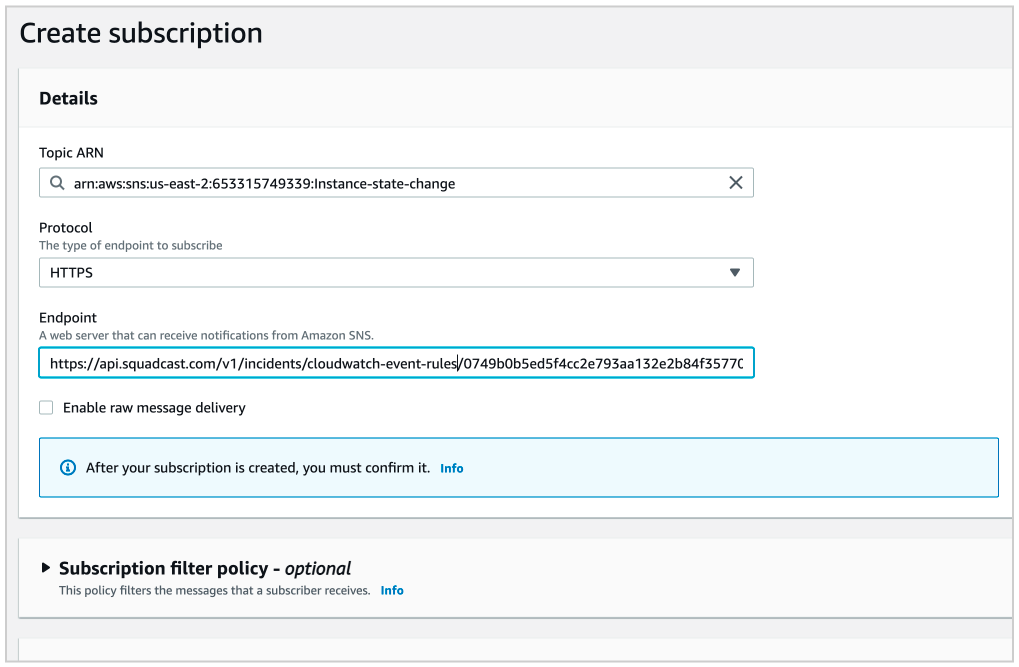
The Subscription ID for the subscription should immediately change to Confirmed from PendingConfirmation. Click on the refresh button to verify the same.
In AWS: Configure Amazon RDS
(1) Headover to your RDS dashboard and navigate to Event Subscriptions
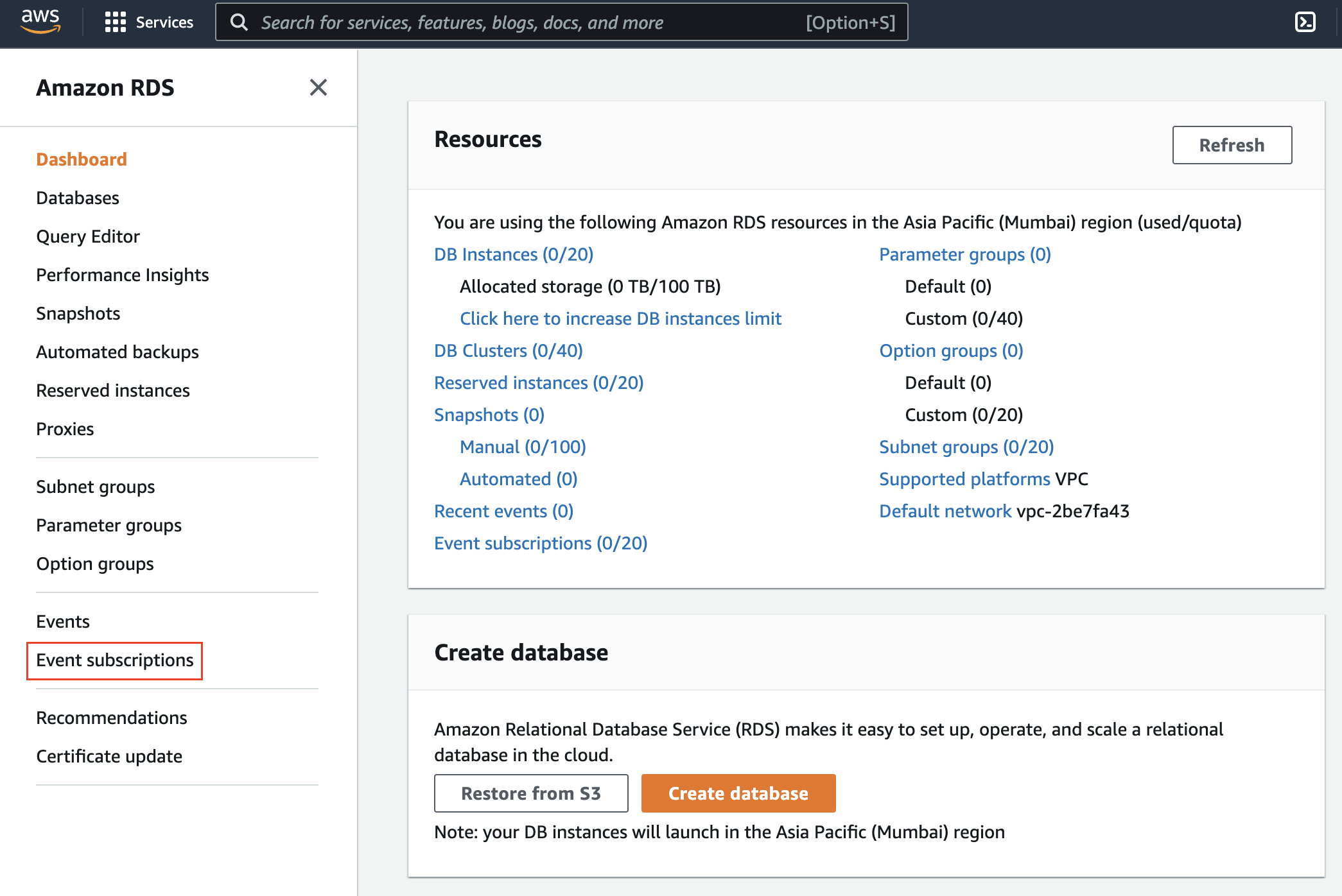
(2) Click on Create event subscription

(3) Enter a suitable Name
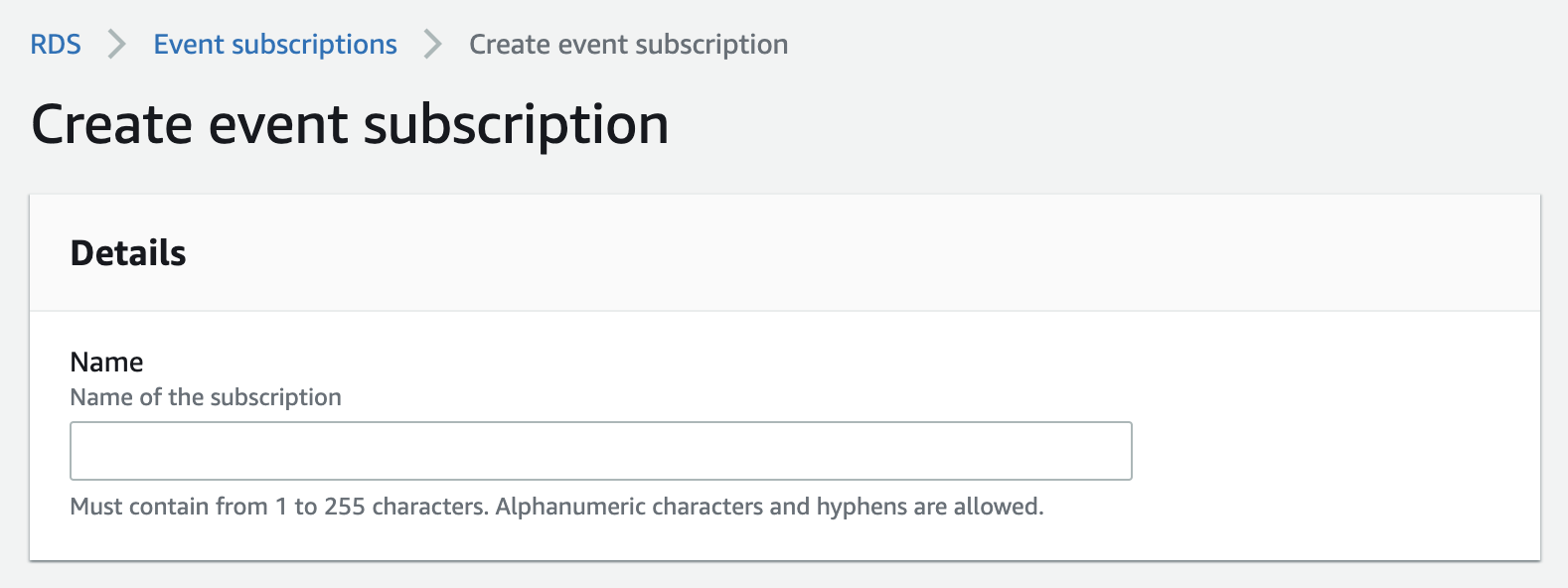
(4) Next, select Target as Amazon Resource Name (ARN) and select the previously created ARN from the drop-down
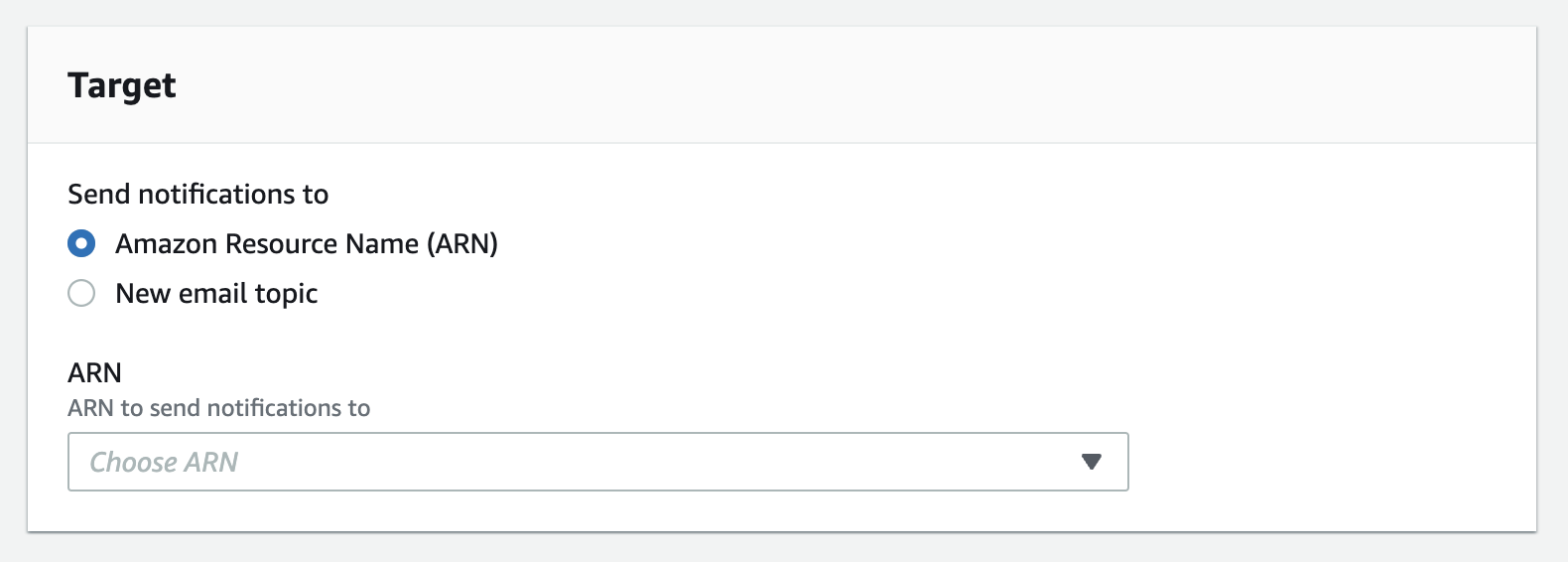
(5) Select the appropriate Source type from the drop-down and click on Create

That’s it, you are good to go! Your Amazon RDS integration is complete. Now, whenever an event is triggered by Amazon RDS, an incident will be created in Squadcast for it.